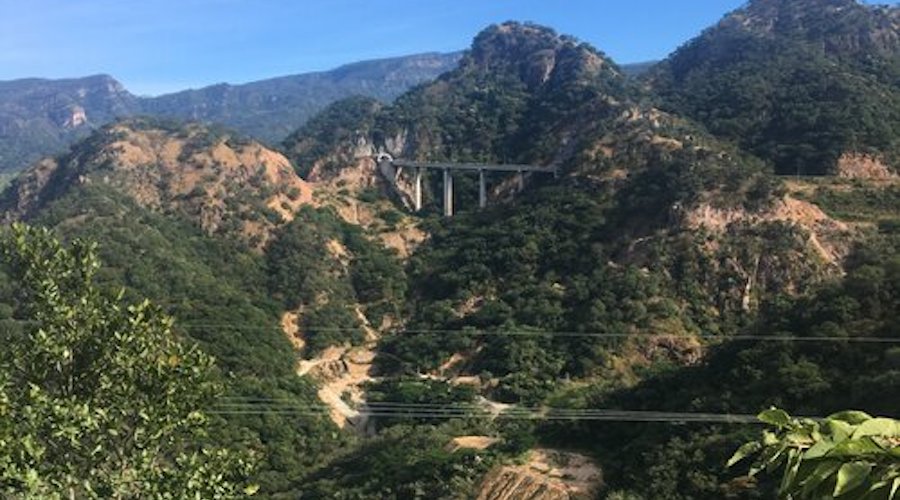“I had spent years travelling the world, looking for the right project. And then an old friend introduced us to the Panuco district, and we knew we had to have it,” Konnert told MINING.COM. “It checked all the boxes. It was huge, it had high-grade silver and it could move to production very quickly. So, we decided to go as hard as we could to acquire the project.”
After spending a full year flying back and forth to Sinaloa and Mexico City, Vizsla’s CEO and his team were able to reach a successful $43-million deal with the families that owned the district.
“Many mining groups had tried to deal with these families, but we remain the only successful group to do so,” he said. “Panuco has been producing silver since its discovery in the 1500s, but it has only now been consolidated by Vizsla Silver. There is an old saying that Mexico’s silver camps aren’t discovered anymore, they’re consolidated. I had the confidence that if we consolidated the project, we would be able to find new discoveries of high-grade silver in this old camp.”
MDC: You have said that Vizsla is on track to becoming Mexico’s next major silver producer. What evidence supports this affirmation?
Konnert: The Panuco district compares very favourably in size and scale to San Dimas, which is 80 kilometres away and has been a major commercial producer of silver and gold for almost 100 years. It was even owned by the Hearst family at the turn of the century.
Our major discoveries at Napoleon and Tajitos, in the western zone of the district, are very rapidly progressing towards resources, which we’ll then move into studies. The two veins combined have a strike length of over 2700 metres in a panel of mineralization. So far, we have drilled down to 450 metres in depth and the mineralization shows no sign of stopping. This is very exciting and may offer the initial years of production for the district. This is less than 5% of the known veins in the area. There are over 80 kilometres of vastly undrilled and underexplored veins that run through the property.
In addition to this, as we are successful in our exploration, we can move into production faster than our peers as we have existing production infrastructure on site, including a historic mill, 30 kilometres of underground workings, roads, power, water, and a local workforce.
MDC: What does it mean to develop a district-scale project from an operations perspective?
Konnert: We have 10 drill rigs turning and one of the world’s largest exploration programs. This is a major undertaking. and specifically this means you must be very organized and coordinated. But for me, personally, it means that I rely on a world-class team of professionals in Mexico and Canada.
Our technical team is led by Martin Dupuis in Canada and his experience is with Mexico’s largest silver and gold operations including Pan American’s Dolores mine.
In Mexico, we have a team of people that have worked with Agnico Eagle, Capstone, Yamana and other major companies and they apply their experience to our project.
MDC: Vizsla aims to complete a maiden resource estimate in the first quarter of 2022. What are your next steps?
Konnert: Vizsla has made some incredible advancements over the last year. From discovery to a maiden resource in less than 18 months, it is very impressive. We still have lots of work left to do in exploring the district for more and more silver as the current resource area is less than 5% of the known veins.
But this resource gives us the ability to move forward into production by completing economic studies on the mineralization we have. We will push this forward very rapidly.
MDC: You have said that as a mining millennial, paying attention to ESG issues is key when it comes to the way your companies operate. How does Vizsla tackle ESG at the Panuco project?
Konnert: My opinion on ESG is perhaps a little different than others. I believe that much of the last generation of miners had to use ESG and built the pathway for modern ESG. Mining always had to have community buy-in, and a mine would generally benefit the surrounding communities. Of course, there are exceptions to this, but I believe it’s true for most companies in the last 20-30 years.
But my take on ESG is that companies need alignment with the communities that they operate in. It is my opinion that Canadian companies in Mexico are there as guests of the communities that we work in, and we need to be respectful and find ways to create shared value and shared benefit from discovery and production.
In the case of Vizsla, we have several communities we impact. I am proud to say that, for over two years now, we’ve employed over 75% of our workforce from the local communities and 90% of our in-country team is from Mexico. We’re spending over $20 million a year in exploration and this is directly benefiting the communities. As we move to production, we will be hiring and training from the communities, and implementing safety protocols that didn’t exist for the current underground mines in the area.
Of course, all of our activities are permitted and done with a view to improving the local environment from how we find it.
MDC: Companies operating in Mexico must navigate a complex sociopolitical environment where corrupt authorities and illegal groups can even mix together. How do you fulfill your commitment to “business of good” in a place like Sinaloa?
Konnert: Vizsla is operating as a guest of the country of Mexico, the state of Sinaloa and the communities we work in. As such, it’s incumbent on us to operate in an honest and transparent fashion.
I’ve found in my career that the best opportunities exist between perception and reality. In the case of Mexico and Sinaloa, we have found a vibrant, hard-working, and honest community that we fit well in and can create share benefits for, which I believe is somewhat different than historic perceptions.
As a Canadian company, Vizsla is an ambassador for Canadian values and industry standards in all aspects of our operations. By doing so, we hope to inspire other Canadian companies with overseas operations to do the same.




